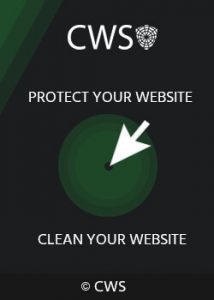
Website Phishing what is it ?
Almost everyone have met examples of phishing. It is a form of deception hackers use to get user’s personal information like logins and passwords, email addresses, credit card information. Commonly, hackers aim to steal money. And despite all the information we have about phishing, every day users suffer from hacker’s machinations.
How does phishing look
Typically, fake web pages look pretty much like the real ones. Hackers will use logo and other visual identity of that brand they want to mimic, similar fonts and user interface elements. Of course, there will be some differences between the real and the fake web page. But most of the users tend to surf through the Internet being in a relaxed state of mind. So let’s agree it won’t be hard to get someone on the hook.
Hackers always try to create links that will genuinely look like real. The most common tricks are misspelled URLs, subdomains and the use of different logical characters.
Also, user can be tricked with an email letter. But usually malicious emails are easy to spot. You might see a lot of mistakes in the text, suspicious or shortened links. And if there are some offers in the email that are too attractive to be real, you can be pretty sure this letter is fake.
It should be said that thefts will not start without knowing their victims. To prepare for attack phishers would use any source to gather all the needed information to create a solid and believable message.
Phishing is the biggest problem today
Despite almost every Internet user knows at least common data about phishing, hackers still manage to trick people and steal their personal information. Moreover, attackers are not staying still. They improve their skills every day, create new ways to get victims, come up with some new ideas on how to disguise threats.
It’s pretty hard to find malicious codes. But the task is getting harder all the time – hackers have their own blacklists. They collect every security service that might be harmful for their phishing campaign. So if website user comes from one of those services, he will see a 404 mistake instead of the fake page.
Some people think that hackers can harm only websites that are based on a specific CMS. But it is a myth. Every website can be hacked so better don’t calm yourself with an illusion of safety.
Threats phishing does to business
Not only users suffer from phishing. Hackers can harm your business as well:
Hacked website will get blocked. If hoster found a fake page, website will be blocked immediately. Sometimes, you might get an alert that will inform you about an attack. But this option is less common.
Hackers can try to reach the corporate funds. With this goal in mind thieves will aim high-level employees to get the needed information. This can deal huge damage to the company.
Business will lose customers. A lot of customers. Some of them will be caught on the hook and lose their money. And some might just not trust the hacked website, which is even worse.
A simple attack can cost a lot of money to the business. And as hackers improve their skills, attacked companies lose more. You shouldn’t underestimate all the threats.
How to understand that you’ve become a victim?
We have talked earlier about how to spot a threat. But it is much harder to understand that website is hacked if you are its owner. And if you are not familiar with coding, the task gets even harder. But if your statistics show strange behaviour of your visitors, your website could be hacked.
Usually hackers place malicious codes into the core directories of targeted website. So it is impossible to guess where the threat is. So it would be logical to ask professionals for help. They will find all viruses, malicious codes and do a malware cleanup as fast as possible. Cobweb Security team will also repair code vulnerabilities to prevent future attacks.
Since it’s better to prevent the threat than fighting with effects it will cause, you should think about protection. CWIS antivirus will monitor your website to detect viruses, malware and phishing attempts immediately. Also, this tool will check if your website gets blacklisted.
Taking care of the problem in advance will save a lot of money, time and nerves for you. Your business can always become a target for hackers, so it is better to be on the guard.
Examples of Web Phishing
A letter on behalf of Amazon
A new kind of phishing – letters from Amazon. Hackers on behalf of the online store send out a notification about a non-existent problem with the order. To solve the problem scammers offer to update the personal data on the link in the letter, otherwise the account will be blocked.
If you click on the link, you get to the fake Amazon.com site. Here you will be asked to enter personal data and bank card details. After you click the “Save and continue” button, scammers will redirect you to a real Amazon.com site. So they will exclude any suspicion.
Phishing Email from a friend
At the target phishing the hacker already knows some data about you: name and address. The greeting in the letter will be personalized: “Hi, John” Also, the message mentions your “mutual friend” or your last purchase in the online store. The hacker reduces your vigilance. You are sure that the message was sent by your acquaintance and it is easy to provide the fraudster with the information that interests him.
Substitution of advertising banners
This is one of the easiest methods of phishing. You may be offered to advertise on the site. One click on the banner and you will be redirected to the fake site of the organization. Here you will be asked for credentials again.

